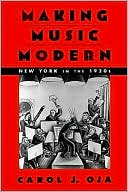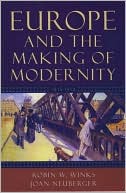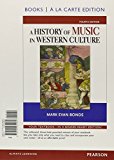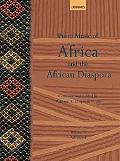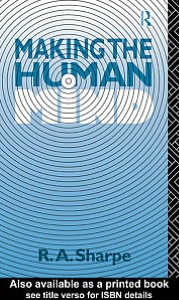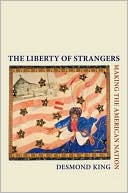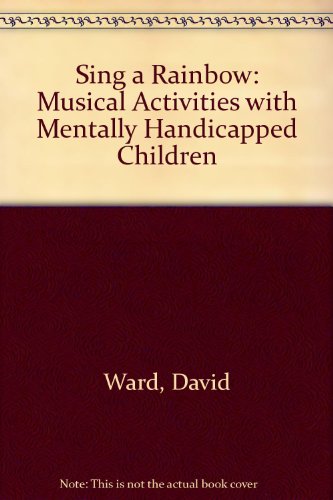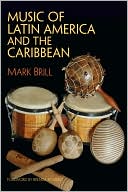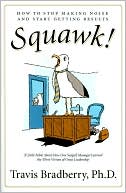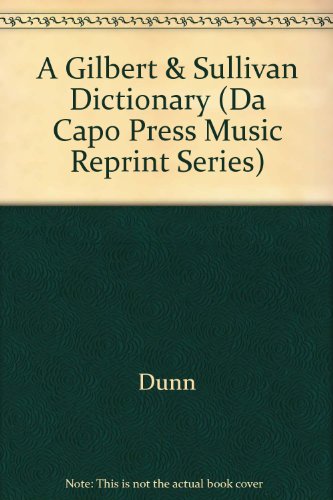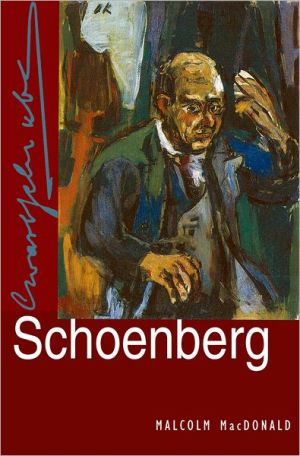Making Music Modern: New York in the 1920s
Oja, Carol J.
New York City witnessed a dazzling burst of creativity in the 1920s. In this pathbreaking study, Carol J. Oja explores this artistic renaissance from the perspective of composers of classical and modern music, who along with writers, painters, and jazz musicians, were at the heart of early modernism in America. She also illustrates how the aesthetic attitudes and institutional structures from the 1920s left a deep imprint on the arts over the 20th century.
Aaron Copland, George Gershwin, Ruth Crawford Seeger, Virgil Thomson, William Grant Still, Edgard Varèse, Henry Cowell, Carl Ruggles, Marion Bauer, Dane Rudhyar—these were the leaders of a talented new generation of American composers whose efforts made New York City the center of new music in the country. They founded composer societies—such as the International Composers' Guild, the League of Composers, the Pan American Association, and the Copland-Sessions Concerts—to promote the performance of their music, and they nimbly negotiated cultural boundaries, aiming for recognition in Western Europe as much as at home. They showed exceptional skill at marketing their work. Drawing on extensive archival material—including interviews, correspondence, popular periodicals, and little-known music manuscripts—Oja provides a new perspective on the period and a compelling collective portrait of the figures, puncturing many longstanding myths.
American composers active in New York during the 1920s are explored in relation to the Machine Age and American Dada; the impact of spirituality on American dissonance; the crucial, behind-the-scenes role of women as patrons and promoters of modernist music; cross-currents between jazz and concert music; the critical reception of modernist music (especially in the writings of Carl Van Vechten and Paul Rosenfeld); and the international impulse behind neoclassicism. The book also examines the persistent biases of the time, particularly anti-Semitisim, gender stereotyping, and longstanding racial attitudes.
- Places American music in the 1920s in the context of parallel developments in the visual arts and literature
- Challenges the myth that American composers of the period were self-made pioneers
About the Author:
Carol Oja is Margaret and David Bottoms Professor of Music and Professor of American Studies at the College of William and Mary. She is also the author of Colin McPhee: Composer in Two Worlds, which won the ASCAP-Deems Taylor Award, and American Music Recordings: A Discography of U.S. Composers.
Library Journal
With this superb exploration of the classical music scene in New York City during the 1920s and early 1930s, Oja (music and American studies, Coll. of William and Mary) adds to her list of well-received music titles, including the ASCAP-Deems Taylor Award-winning Colin McPhee: Composer in Two Worlds. She profiles a variety of composers, both well known (Aaron Copland) and little remembered (Dane Rudhyar), analyzing a composition and placing the musician within the context of the overall artistic and social milieu. Her ability to show how styles such as neoclassicism and the use of technology or dissonance combined to form a new genre of American music is a distinguishing feature. Women patrons, the influence of jazz, and music criticism are discussed, and there is a useful appendix of programs of modern music societies. One hopes that Oja will now focus on another decade or locale to complement this work. Exhaustively researched and written in an intelligent, engaging style, this book is highly recommended for academic collections and for public collections with a sophisticated clientele.--Barry Zaslow, Miami Univ. Libs., Oxford, OH Copyright 2000 Cahners Business Information.
| Name in long format: | Making Music Modern: New York in the 1920s |
|---|---|
| ISBN-10: | 0195058496 |
| ISBN-13: | 9780195058499 |
| Book pages: | 512 |
| Book language: | en |
| Edition: | 1 |
| Binding: | Hardcover |
| Publisher: | Oxford University Press |
| Dimensions: | Height: 9.2 Inches, Length: 6 Inches, Weight: 1.91140781154 Pounds, Width: 1.6 Inches |

